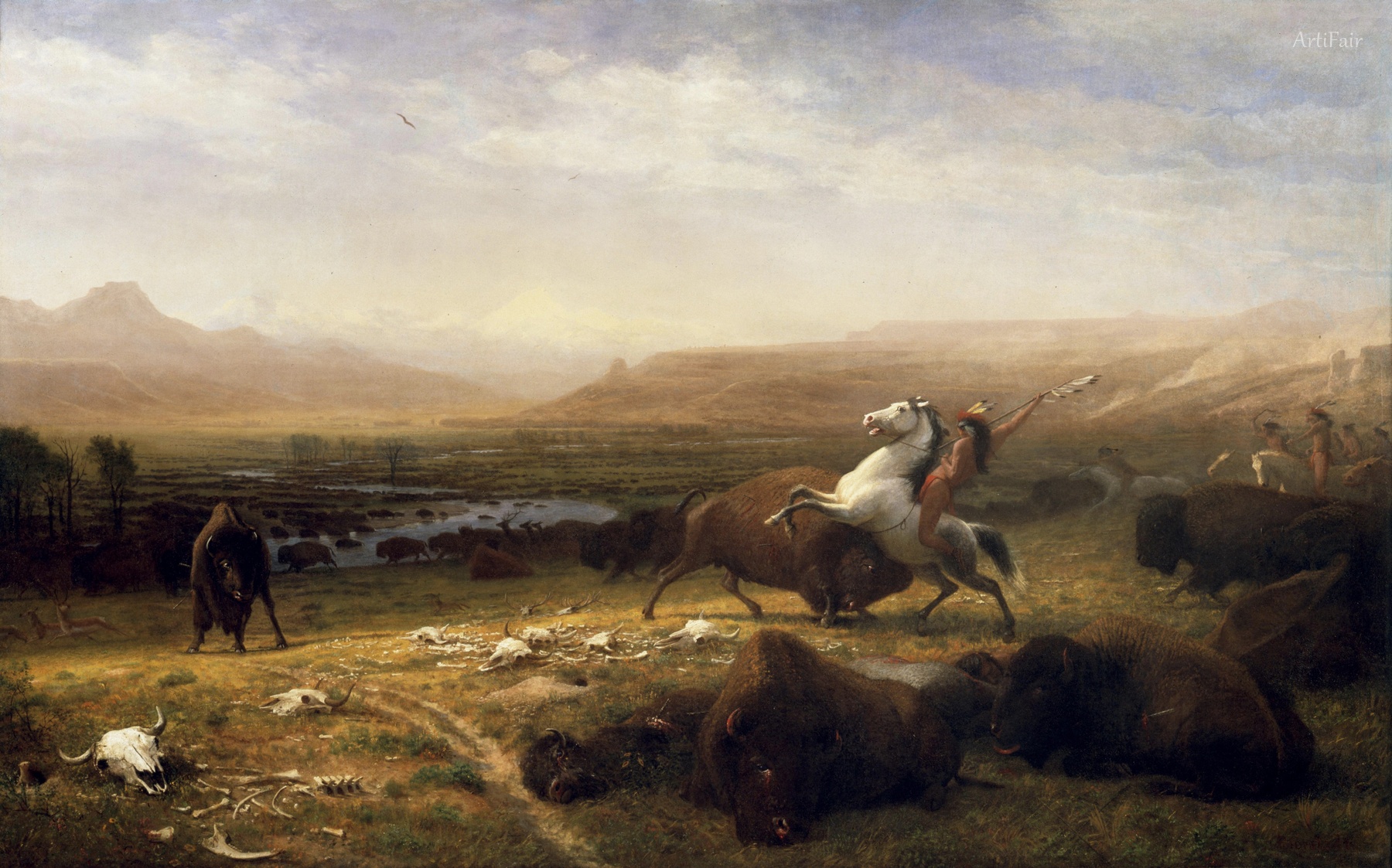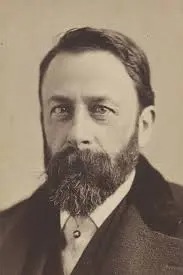

Albert Bierstadt
US
27
Artworks
1830 - 1902
Lifespan
Artist Biography
Albert Bierstadt, born in Solingen, Prussia (Germany), on January 7, 1830, became one of America's foremost painters of the Western landscape. His family immigrated to New Bedford, Massachusetts, when he was just two years old. Displaying an early talent for art, Bierstadt was largely self-taught before returning to Germany in 1853 to study at the prestigious Düsseldorf Academy. There, he honed his technical skills, associating with prominent landscape painters like Andreas Achenbach and Karl Friedrich Lessing, and traveled extensively through Germany, Switzerland, and Italy, sketching the Alpine scenery. This European training, combined with his American upbringing, uniquely positioned him to capture the monumental scale of the New World's wilderness. He returned to New Bedford in 1857, ready to embark on a career that would define the visual narrative of American expansion.
The pivotal moment in Bierstadt's career arrived in 1859 when he joined Colonel Frederick W. Lander's government survey expedition to the Rocky Mountains. This journey provided him with firsthand exposure to the dramatic vistas and unspoiled wilderness of the American West, a subject that would dominate his oeuvre. Armed with sketchbooks and photographic equipment (he often used daguerreotypes as references), Bierstadt meticulously documented the landscapes, flora, fauna, and Native American life he encountered. These field studies became the raw material for the enormous, highly detailed canvases he would later produce in his New York studio. His initial Western paintings, exhibited upon his return, captivated the public and critics alike, heralding the arrival of a major new talent.
Bierstadt's artistic style is characterized by its grand scale, meticulous detail, and dramatic use of light and atmosphere, often associated with the second generation of the Hudson River School and Luminism. He specialized in panoramic views of majestic mountains, serene lakes, and vast plains, often bathed in ethereal, glowing light that emphasized their sublime beauty. His works, such as *The Rocky Mountains, Lander's Peak* (1863) and *Among the Sierra Nevada, California* (1868), were not mere topographical records but romanticized interpretations that resonated with the era's spirit of Manifest Destiny and the nation's fascination with its untamed frontiers. These paintings were celebrated for their technical brilliance and their ability to transport viewers to these remote and awe-inspiring regions.
Throughout the 1860s and 1870s, Bierstadt achieved immense fame and financial success. His monumental canvases commanded unprecedented prices, making him one of the wealthiest artists of his time. He built a lavish studio, "Malkasten," in Irvington, New York, and received international acclaim, including honors in Europe. Bierstadt undertook further expeditions West, including a significant trip in 1863 to Yosemite Valley, California, and Oregon, which provided fresh inspiration for his iconic depictions of the American wilderness. His work played a crucial role in shaping the popular perception of the West, often presenting it as a pristine Eden, though sometimes criticized for its idealization and the marginalization of Native American figures within the grandeur of nature.
By the 1880s, however, Bierstadt's fortunes began to change. Artistic tastes were shifting towards more intimate, painterly styles influenced by the Barbizon School and Impressionism, which were gaining favor in America. Critics increasingly viewed Bierstadt's highly detailed, grandiose style as theatrical, formulaic, and outmoded. His popularity waned, and he faced financial difficulties, exacerbated when his studio "Malkasten" burned down in 1882, destroying many works. A significant blow came when his large painting, *The Last of the Buffalo* (c. 1888), a poignant commentary on the vanishing West, was rejected by the American committee for the 1889 Paris Exposition Universelle, signaling a decline in his critical standing.
Albert Bierstadt continued to paint prolifically in his later years, traveling to Alaska and Canada, but he never regained the widespread acclaim he once enjoyed. He passed away in relative obscurity in New York City on February 18, 1902. However, the 20th century saw a significant re-evaluation of his work. Today, Bierstadt is recognized as a master of American landscape painting, a brilliant technician, and a pivotal figure in chronicling and mythologizing the American West. His epic canvases remain powerful testaments to the nation's 19th-century expansionist vision and the breathtaking beauty of its wilderness, securing his enduring place in the annals of American art history.